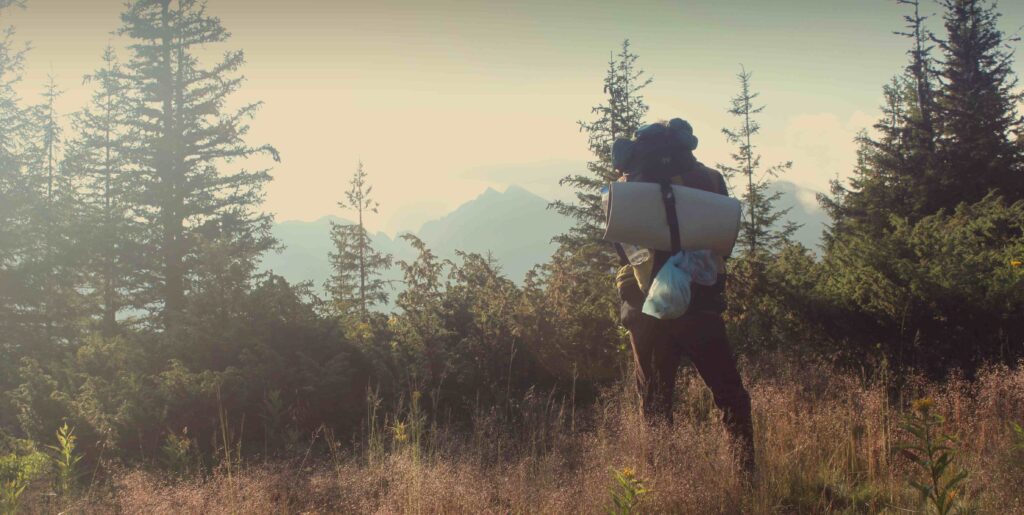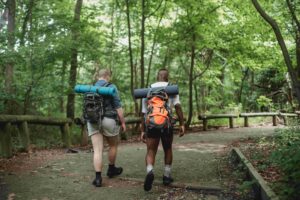What You Will Learn About Sleeping Bags on Offer
- Different types of sleeping bags available, including mummy, rectangular, and double sleeping bags.
- The importance of temperature ratings and how to select the right one based on intended use and climate conditions.
- Factors that affect the price of sleeping bags and additional features to consider.
Are you in search of the perfect sleeping bag for your outdoor adventures? Look no further! In this article, we will guide you through the process of selecting the right sleeping bag by discussing different types, temperature ratings, insulation types, features to consider, factors affecting price, and care and maintenance. With our expert advice, you’ll be able to make an informed decision and find the sleeping bag that will make your outdoor experiences even more enjoyable.
Types of Sleeping Bags
When it comes to sleeping bags, there are several types available on the market. Let’s take a closer look at the three most common types:
1. Mummy Sleeping Bags
Mummy sleeping bags are named after their shape, which closely resembles that of an Egyptian mummy. These sleeping bags are designed to provide maximum warmth and weight savings. The tapered shape and hood help to trap body heat inside, keeping you cozy even in cold temperatures. Mummy bags are a popular choice among backpackers and hikers due to their lightweight and compact design.
2. Rectangular Sleeping Bags
If you prefer more room and comfort, rectangular sleeping bags are the way to go. They provide ample space for movement and are ideal for those who prefer a more relaxed fit. Rectangular bags are great for car camping or when weight is not a major concern. They also offer the flexibility of being fully unzipped and used as a blanket.
3. Double Sleeping Bags
For couples or those who prefer extra space while sleeping, double sleeping bags are perfect. These bags are wider than standard sleeping bags and often feature a two-person hood and dual zippers for easy access. Double sleeping bags are designed to provide comfort and warmth for two people, making them an excellent choice for romantic getaways or camping trips with a partner.
| Type of Sleeping Bag | Description | Best for |
|---|---|---|
| Mummy Sleeping Bags | Tapered shape resembling an Egyptian mummy, provides maximum warmth and weight savings. | Backpackers and hikers looking for lightweight and compact design. |
| Rectangular Sleeping Bags | Ample space for movement and a more relaxed fit. Can be fully unzipped and used as a blanket. | Car camping or when weight is not a major concern. |
| Double Sleeping Bags | Wider than standard sleeping bags, designed for couples or those who prefer extra space while sleeping. | Romantic getaways or camping trips with a partner. |

Temperature Ratings
Temperature ratings are crucial when choosing a sleeping bag. They indicate the lowest temperature at which a sleeping bag can keep you comfortable. Let’s explore the two common temperature rating systems:
1. EN (European Norm) Rating System
The EN rating system provides standardized temperature ratings for sleeping bags. It consists of two numbers: the comfort rating and the lower limit rating. The comfort rating indicates the temperature at which a standard woman can sleep comfortably, while the lower limit rating indicates the temperature at which a standard man can sleep without feeling too cold. Keep in mind that individual comfort levels may vary, so it’s a good idea to choose a bag rated for slightly lower temperatures than you expect to encounter.
2. Seasonal Rating System
The seasonal rating system categorizes sleeping bags based on the seasons in which they are most suitable. It includes three main categories: summer, three-season, and winter bags. Summer bags are lightweight and designed for warm weather camping. Three-season bags are versatile and can handle a range of temperatures from spring to fall. Winter bags are heavily insulated and perfect for cold winter nights or high-altitude camping. Consider the intended use and climate conditions when selecting a sleeping bag with a specific seasonal rating.

Insulation Types
Insulation is what keeps you warm inside a sleeping bag. There are three main types of insulation materials used in sleeping bags:
1. Down Insulation
Down insulation is made from the soft and fluffy feathers found under the outer feathers of ducks and geese. It offers an excellent warmth-to-weight ratio, providing high insulation while being lightweight. Down is known for its superior compressibility, making it easy to pack and carry. However, down insulation loses its insulation properties when wet, so it is important to keep down sleeping bags dry to maintain their warmth.
2. Synthetic Insulation
Synthetic insulation is made from polyester fibers that mimic the properties of down. It is a popular choice for those who need a sleeping bag that performs well in wet conditions. Synthetic insulation retains its warmth even when wet and dries quickly. While synthetic bags are generally heavier and less compressible than down bags, they are often more affordable and easier to care for.
3. Hybrid Insulation
Hybrid insulation combines the best of both worlds by using a combination of down and synthetic materials. This type of insulation offers a balance between warmth, weight, and moisture resistance. Hybrid bags provide the benefits of down insulation while being more resistant to moisture. They are a great choice for those who want the warmth of down with added protection against damp environments.

Features to Consider
Apart from the type, temperature rating, and insulation, there are several additional features to consider when selecting a sleeping bag. These features can enhance your comfort and convenience during your outdoor adventures. Let’s explore some of them:
1. Zipper Type and Location
Consider the type and location of the zipper as it greatly affects the ease of entry and ventilation of a sleeping bag. Some bags feature a full-length zipper that allows you to open the bag entirely, while others have a shorter zipper that provides partial access. Choose a bag with a zipper of good quality that operates smoothly and consider whether you prefer a side zipper or a center zipper.
2. Hood Design
A well-designed hood can help to trap heat and keep your head warm during cold nights. Look for a sleeping bag with an adjustable hood that can be cinched tight for maximum insulation. Some hoods also feature a built-in pillow pocket or a pillow sleeve for added comfort.
3. Draft Collar and Draft Tube
Draft collars and draft tubes are additional insulation features that help to prevent cold air from entering the sleeping bag. A draft collar is a padded collar around the neck area that seals in warmth, while a draft tube is a fabric tube along the zipper that blocks cold air from seeping through. These features are especially important in colder weather conditions.
4. Pockets and Storage Options
Having pockets and storage options in your sleeping bag can be convenient for keeping small items within reach. Look for bags with internal pockets for storing essentials like a phone, flashlight, or glasses. Some bags even have external storage compartments for easy access to items like snacks or a water bottle.
Factors Affecting Price
The price of a sleeping bag can vary based on several factors. Understanding these factors can help you determine the overall value of a sleeping bag. Here are some key factors to consider:
1. Brand Reputation and Quality
Well-established brands with a reputation for producing high-quality outdoor gear often come with a higher price tag. While it may be tempting to opt for a cheaper alternative, investing in a reputable brand can ensure durability, performance, and customer support.
2. Insulation Type and Fill Power
The type of insulation and its fill power can significantly affect the price of a sleeping bag. Higher fill power down insulation is generally more expensive due to its superior warmth-to-weight ratio. Synthetic insulation is typically more affordable but may sacrifice some weight savings and compressibility.
3. Temperature Rating
Sleeping bags designed for extreme temperatures or specialized conditions, such as winter or ultralight backpacking, often come with a higher price tag. Consider your specific needs and choose a bag with a temperature rating that aligns with your intended use.
4. Additional Features and Accessories
Sleeping bags with extra features like waterproof coatings, reinforced zippers, or integrated sleeping pad sleeves may cost more than basic models. Consider which features are essential for your comfort and convenience and decide if the added cost is worth it.
Care and Maintenance
Proper care and maintenance are essential for prolonging the lifespan of your sleeping bag. Here are some tips to keep your sleeping bag in top condition:
1. Cleaning Instructions
Follow the manufacturer’s cleaning instructions, as different sleeping bags may require different care methods. In general, spot clean your bag whenever possible and only machine wash it when necessary. Use a gentle detergent specifically designed for outdoor gear and avoid using fabric softeners.
2. Storage Recommendations
Store your sleeping bag in a dry and well-ventilated area. Avoid compressing it for long periods, as this can reduce the loft and insulation properties. Instead, store it loosely in a large storage sack or hang it up in a closet. If your bag came with a stuff sack, use it for transportation but avoid storing it compressed inside the sack for extended periods.
3. Repairing Minor Damages
Minor damages like small tears or broken zippers can often be repaired at home. Many outdoor gear stores sell repair kits specifically designed for fixing sleeping bags. Follow the instructions provided with the repair kit or consider seeking professional repair services for more significant damages.
Conclusion
Selecting the right sleeping bag is crucial for a comfortable and enjoyable outdoor experience. Consider the type, temperature rating, insulation, features, and price when making your decision. Remember to prioritize your comfort, safety, and personal preferences. With the information provided in this article, you are now equipped to find the perfect sleeping bag for your next adventure.
To further enhance your outdoor knowledge, don’t forget to check out our other content. We have articles on adventure sports and day trips that can provide you with valuable insights and inspiration for your next outdoor activity. Additionally, if you’re in need
Case Study: Sarah’s Search for the Perfect Sleeping Bag
Sarah is an avid outdoor enthusiast who loves going on camping trips and hiking adventures. She recently decided that it was time to invest in a new sleeping bag to enhance her outdoor experiences. As she began her search, she quickly realized that there were numerous options available, making it a bit overwhelming to choose the perfect sleeping bag.
After doing some research, Sarah learned about the different types of sleeping bags. She knew she needed a bag that was lightweight and compact, so she decided to go with a mummy sleeping bag for its superior insulation and weight savings. Sarah often found herself camping in various weather conditions, so she wanted a bag that would keep her warm in colder temperatures.
Temperature ratings were another important factor for Sarah. She wanted a sleeping bag that would provide ample warmth during chilly nights but wouldn’t be too hot during the warmer months. Sarah decided to go with a three-season sleeping bag, which she felt would be versatile enough for most of her outdoor adventures.
When it came to insulation types, Sarah had to consider her budget and the potential for wet weather. She opted for a synthetic insulation sleeping bag because it offered better performance in wet conditions and was more affordable compared to down insulation.
As Sarah continued her search, she also paid attention to additional features. She wanted a sleeping bag with a full-length zipper for easy access and ventilation options. A hood design that could cinch tightly around her head for added warmth was also a must-have. She also found a sleeping bag with a draft collar and draft tube to be beneficial in preventing cold air from seeping in.
Considering her budget, Sarah had to be mindful of the price range. She knew that brand reputation, quality, and additional features would contribute to the overall price of the sleeping bag. After carefully weighing her options, Sarah finally found the perfect sleeping bag that ticked all her boxes and fell within her budget.
Sarah knows that taking care of her sleeping bag is essential for its longevity. She follows the manufacturer’s cleaning instructions, stores it properly, and takes care of minor damages promptly.
Sarah’s experience in finding the perfect sleeping bag highlights the importance of considering various factors such as type, temperature rating, insulation type, features, and price. By doing thorough research and understanding her specific needs, Sarah was able to make an informed decision and find a sleeping bag that enhances her outdoor adventures.
Questions and Answers
Q: Who offers discounted outdoor sleeping bags?
A: Many retailers offer discounted outdoor sleeping bags for camping and outdoor activities.
Q: What types of sleeping bags are on offer?
A: Various types of sleeping bags, including mummy bags and rectangular bags, are on offer.
Q: How can I find the best sleeping bag deals?
A: You can find the best sleeping bag deals by comparing prices and checking online retailers specializing in outdoor gear.
Q: Who offers the best quality sleeping bags on offer?
A: Many reputable outdoor gear brands offer high-quality sleeping bags that are often on offer.
Q: What should I consider when buying a discounted sleeping bag?
A: When buying a discounted sleeping bag, consider factors such as temperature rating, weight, and insulation type.
Q: How can I ensure the discounted sleeping bag is suitable for my needs?
A: Read product descriptions and customer reviews to ensure the discounted sleeping bag meets your specific needs and preferences.
Q: What if I’m not satisfied with the discounted sleeping bag?
A: Most retailers have return policies, so if you’re not satisfied with the discounted sleeping bag, you can typically return or exchange it within a specified timeframe.
Amelia Davis, an avid outdoor enthusiast and experienced camper, is the perfect person to guide you in finding the perfect sleeping bag for your outdoor adventures. With over 10 years of camping experience in various climates and terrains, Amelia Davis understands the importance of a good quality sleeping bag.
Amelia Davis has extensively researched and tested different types of sleeping bags, exploring their features, insulation types, and temperature ratings. They have also studied the various brands available in the market, evaluating their reputation and quality.
In addition to their practical experience, Amelia Davis holds a degree in Outdoor Recreation and has completed several certifications in camping and wilderness survival. They have also contributed articles on outdoor gear and camping tips to various reputable outdoor publications.
Amelia Davis believes in providing well-researched and reliable information to help outdoor enthusiasts make informed decisions. Their expertise and passion for the outdoors make them the go-to person for all your sleeping bag needs.







